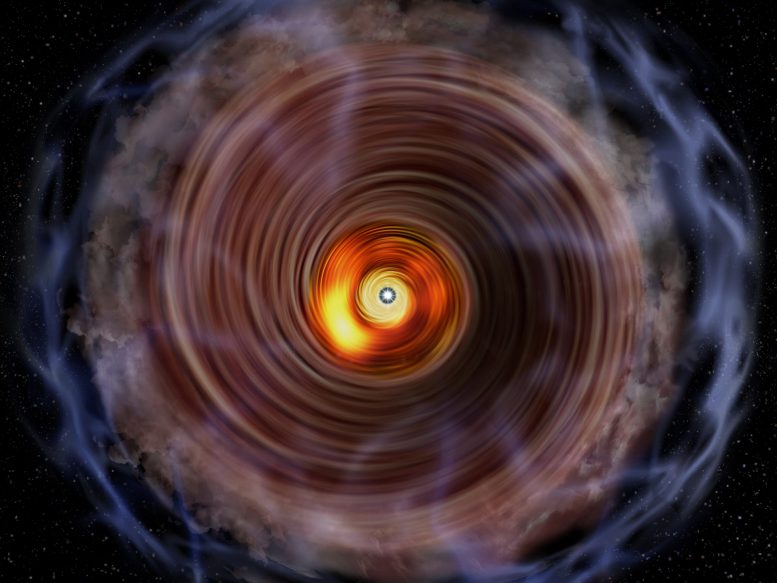
Artist’s impression of the gaseous disk and envelope around the massive protostar G353.273+0.641. Credit: National Astronomical Observatory of Japan
Astronomers obtained the first detailed face-on view of a gaseous disk feeding the growth of a massive baby star. They found that it shares many common features with lighter baby stars. This implies that the process of star formation is the same, regardless of the final mass of the resulting star. This finding paves the way for a more complete understanding of star formation.
A protostar, a baby star still in the process of forming, is fed by a surrounding disk of gas falling toward the center. The details of the process, such as why stars form with a wide range of masses, are still unclear. Low-mass stars are being formed in the vicinity of the Solar System, allowing astronomers to see the process up close. On the other hand, massive protostars are rare, and even the nearest ones are located quite far away from us.
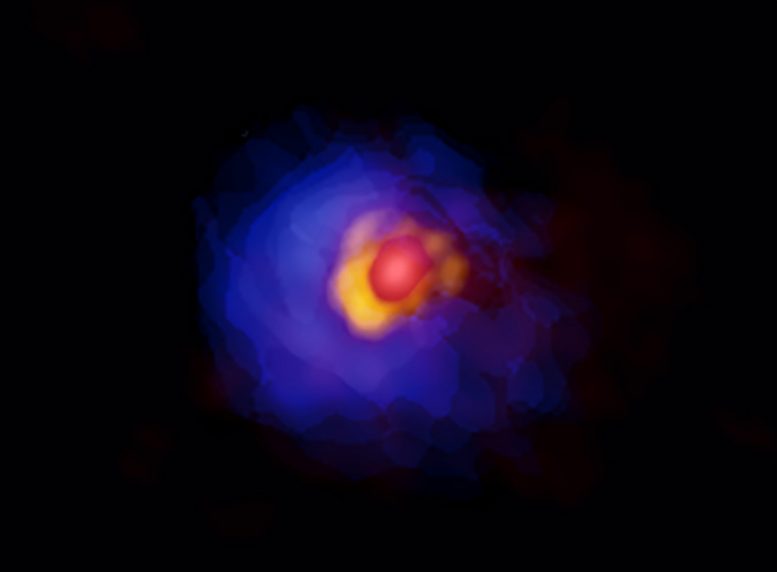
ALMA image of the massive protostar G353.273+0.641. Comact emission around the central protostar, disk, and gaseous envelope are shown in red, yellow, and blue. Asymmetry in the disk is clearly shown with the high resolution ALMA observations. Credit: ALMA (ESO/NAOJ/NRAO), Motogi et al.
Kazuhito Motogi, an assistant professor at Yamaguchi University, Japan, and his team used the Atacama Large Millimeter/submillimeter Array (ALMA) to observe a massive protostar called G353.273+0.641 (hereafter G353). Located 5500 light-years away in the constellation Scorpius, G353 has a mass 10 times larger than the Sun and is still growing. It is a unique target among massive protostars because we can see its gaseous disk from straight above. ALMA has revealed detailed views of several other massive infant stars, however, most of them are in edge-on configurations, making it difficult to see the inner regions of the disks.
ALMA observations captured a rotating disk around G353 with a radius eight times larger than the orbit of Neptune. This sounds huge, but it is one of the smallest disks yet found around a massive protostar. ALMA also found that the disk is surrounded by an envelope of gas three times larger than the disk.
“We measured the gas infall rate from the outer envelope to the inner disk,” says Motogi. “This helps us to estimate the age of the baby star. Surprisingly it is only 3000 years old, the youngest among known massive protostars. We are witnessing the earliest phase of the growth of a giant star.”
Interestingly, the disk is not uniform; the southeastern side of the disk is brighter than other parts. This is the first time astronomers have seen an asymmetric disk around a massive protostar. The team also found that the disk is highly unstable and going to fragment. The uneven disk might be caused by this instability. These features are often seen around smaller protostars, suggesting that the essential physical processes are the same in low-mass and high-mass star formation.
“Previous studies had implied that the formation process might be different for stars of different masses,” says Motogi. “Our new observations show the similarity. This is an important step to understanding how massive protostars gain mass from the surroundings.
Reference: “The first bird’s-eye view of the gravitationally unstable accretion disk in high mass star-formation” by Kazuhito Motogi, Tomoya Hirota, Masahiro N. Machida, Yoshinori Yonekura, Mareki Honma, Shigehisa Takakuwa and Satoki Matsushita, 29 May 2019, The Astrophysical Journal Letters.
DOI: 10.3847/2041-8213/ab212f

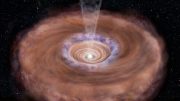
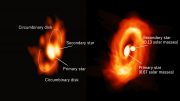
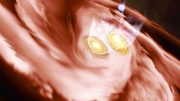
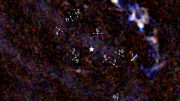
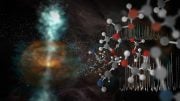
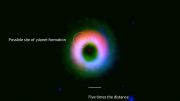
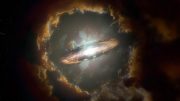
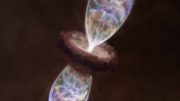
Really lovely post. Thanks for sharing with us. They found that it shares many common features with lighter baby stars. This implies that the process of star formation is the same, regardless of the final mass of the resulting star. This finding paves the way for a more complete understanding of star formation.
We are providing the best photo editing service and other services at a competitive price. If want to get a high-quality photo editing service can you visit Clipping Expert Asia.